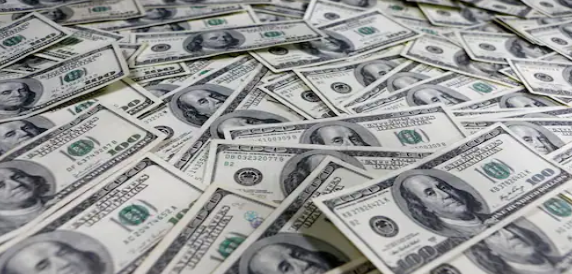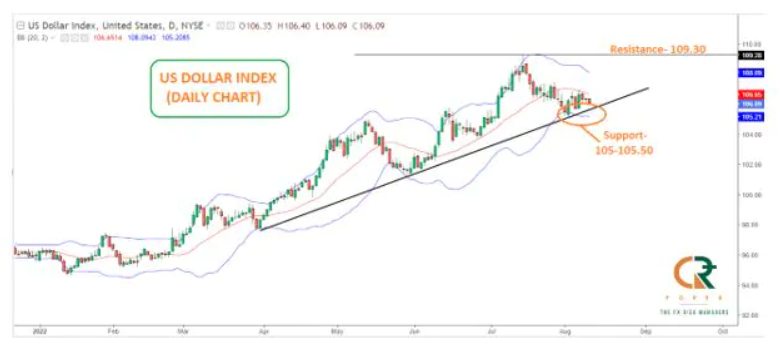- August 19, 2022
- Posted by: Amit Pabari
- Category: Uncategorized

One can say that the reign of equity, bond and currency market is totally in the hands of the Fed and is guided by it or it’s more by the expectation of what the Fed is likely to do!
In July, after Fed sounded less hawkish, the expectation of a September hike had fallen from 75 basis points (bps) anticipated earlier to 50 bps. However, after strong jobs report in the US, it rose back to 75bps and finally after a softer CPI, the projection is down to 50 bps.
Changing expectations concerning Fed rate hikes are swinging the US Dollar Index (DXY) like a pendulum between 105 to 107. As the probability of a 75bps hike at the September meeting has now fallen to 43 percent, from over 70 percent earlier, it has dented the dollar and helped the euro (EUR) and British pound sterling (GBP) to bounce above 1.03 and 1.22 levels, respectively along with other emerging market currencies.
Why can the dollar remain stronger for a longer period?
Inflationary pressure still remains strong
Though inflation is moving in the right direction, it isn’t insurance that the upcoming releases would be on a downward trajectory and won’t be enough for the Fed to be less hawkish when core inflation still remains a concern.
If we analyse core inflation that rose 5.9 percent annually and 0.3 percent monthly, compared with respective estimates of 6.1 percent and 0.5 percent, is still high. Despite the monthly drop in the energy index, electricity prices rose 1.6 percent and were up 15.2 percent from a year ago. The jump in the food index is up at 10.9 percent versus last year, the fastest pace since May 1979.
Also, the price of cars that accounts for a significant portion of core CPI will likely stay high for months as inventories are likely to be depressed given ongoing production problems and continuing high demand.
Earlier, the Fed had indicated that several monthly declines in CPI growth will be needed before it lets up on the aggressive policy tightening.
Balance sheet reduction will pick up steam
The Fed is likely to increase the quantitative tightening (QT) from September, though it is moving slowly and well behind schedule. According to Fed’s proposed schedule, there would be up to $47.5 billion monthly reductions in its balance sheet between June and August.
Since the start of June, there has only been a total reduction of $31.2 billion in two months with a $111.3 billion reduction yet to happen for August before the September scheduled increase, which is likely to double at a $95 billion per month.

On a daily basis, it is clearly evident that the US Dollar index is trading on a bullish trend, taking support near the rising trendline. If the index crosses the 107 mark convincingly, then it could head towards 109-109.30 levels over the short term. On the flip side, support for the index lies near the 105.50 to 105 zone.
Conclusion
The trend in dollar remains bullish and can bounce again up to 109 level as there is an inherent weakness in other developed economies compared to the US. With the Eurozone energy crisis, the UK into a recession with low growth high inflation, China struggling with property crisis and issues over Taiwan, etc. rival currencies are restrained from surging and the price action is mainly determined by the movement in the USD.
Overall demand for the dollar amid Fed’s tightening will lead to outflows from EM’s as well keeping the currencies on a weaker note.
In the current scenario, EUR can fall to parity again if it breaks 1.0150 level and GBP can be seen near 1.1750 level. For USDINR though it’s in a consolidation phase between 78.80 to 80.10 levels, if the pair is able to convincingly break 80.10 levels, it can shoot up to 81.00 to 81.50 levels shortly after the breakout.
Source: https://tinyurl.com/25xdabur




